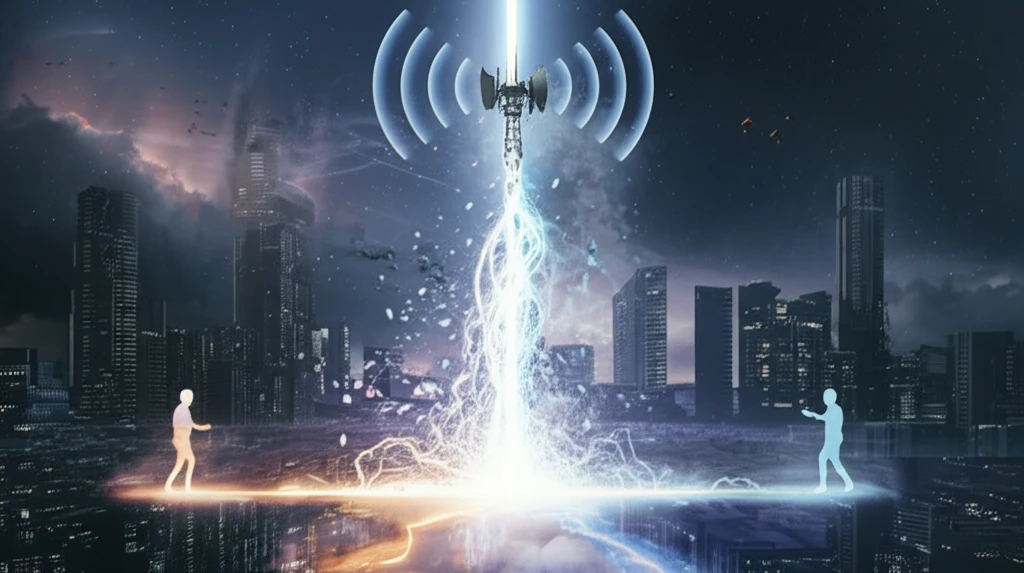
Unlock 5G Potential: The Future of Wireless Communication Without the Bottleneck
"Dive into the innovative NOMA scheme that's set to revolutionize MISO downlink channels, breaking free from traditional CSIT constraints for a faster, more reliable 5G experience."
In the rapidly evolving landscape of wireless communication, the demand for higher speeds, greater reliability, and massive connectivity is constantly escalating. Fifth-generation (5G) networks promise to deliver on these expectations, but they also face significant challenges. One of the most critical hurdles is efficiently managing multiple access techniques—the methods by which numerous devices can simultaneously use the same communication channel. Traditionally, techniques like Non-Orthogonal Multiple Access (NOMA) have relied heavily on Channel State Information at the Transmitter (CSIT).
CSIT allows base stations to intelligently allocate power among users, ensuring that their signals are separable at the receivers. However, acquiring and feeding back this CSI data consumes valuable bandwidth, creating a significant bottleneck. Moreover, existing NOMA techniques become impractical when CSIT is unavailable, leaving base stations with limited options and often resulting in poor performance in terms of outage and error probability. Addressing these limitations is crucial for unlocking the full potential of 5G and future wireless networks. This has lead to the development of a new type of NOMA scheme.
This limitation motivates the exploration of NOMA schemes that don't need CSI knowledge at the BS. By using new techniques, it allows the BS to communicate with two users at the same time while keeping signals separated at their respective receivers. This development aims at multiple-input single-output and single-input single-output downlink channels. By analyzing the technique in terms of achievable degrees-of-freedom and achievable rate per user, the proposed NOMA scheme has been shown to outperform existing NOMA techniques in terms of outage probability and error probability.
Breaking the CSIT Dependency: How the New NOMA Scheme Works

The core innovation lies in a technique called 'interference dissolution,' which enables the base station to maintain perfectly separable signals at the receivers without needing CSIT. Signals are pre-coded in a nonlinear way to get the desired outcome. This approach significantly reduces the overhead associated with CSI feedback, making the system more efficient and robust.
- Interference Dissolution (ID): Uses nonlinear techniques to manage and dissolve interference, ensuring cleaner signal separation.
- CSIT-Free Operation: Eliminates the need for channel state information at the transmitter, reducing bandwidth consumption and improving practicality.
- Enhanced Separability: Maintains distinct signals at the receivers, even without explicit CSI, boosting reliability.
- Improved Performance: Outperforms existing NOMA techniques in outage and error probability, ensuring better overall communication quality.
The Road Ahead: Implications and Future Research
This research paves the way for more efficient and robust wireless communication systems, particularly in 5G and beyond. By removing the dependency on CSIT, networks can operate more flexibly and reliably, supporting a larger number of users and a wider range of applications. The real-world improvements will provide faster access and reliable connectivity for mobile, virtual reality, and augmented reality. Further research could explore extending this NOMA scheme to more complex scenarios, such as those involving a larger number of users or more diverse channel conditions. The success of this research hinges on finding ways to translate cutting-edge insights into practical applications so the next generation will flourish.
